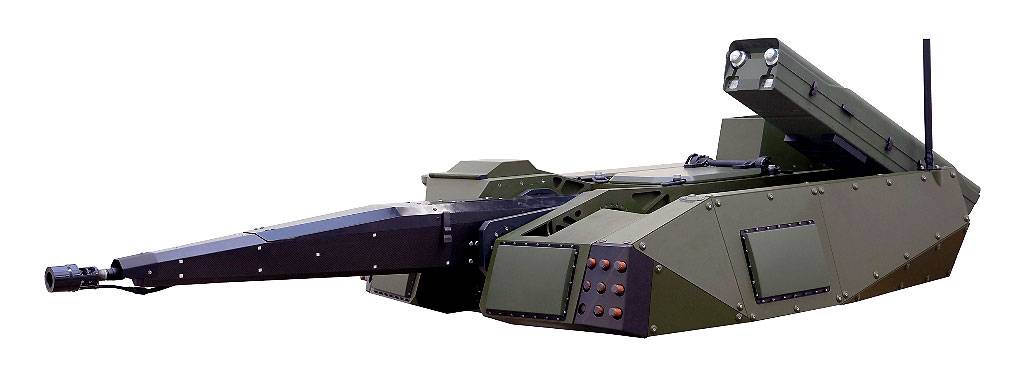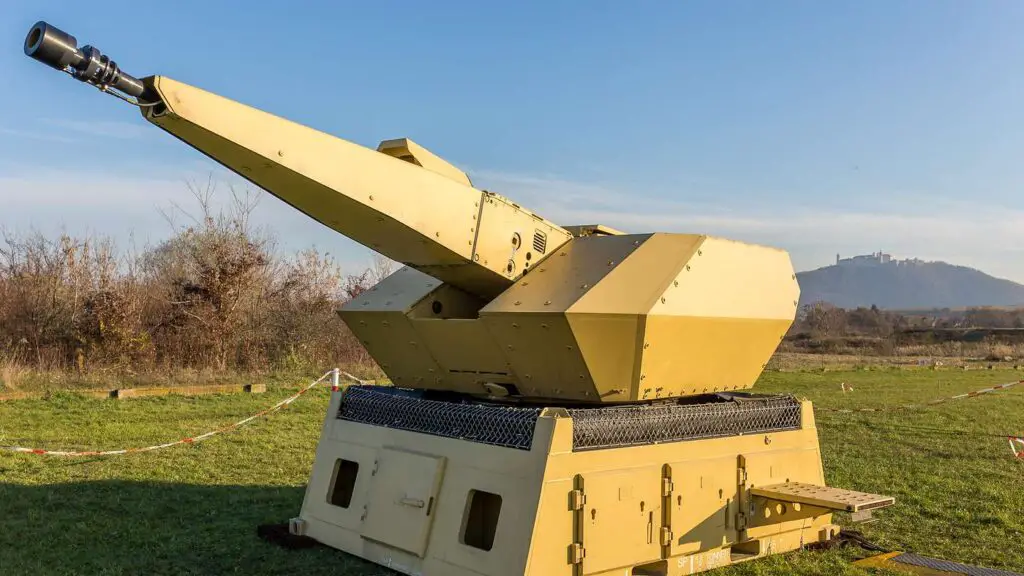Europe lacks a modern short-range military air defense system (SHORAD). Western mobile air defense systems such as the German 35mm double cannon Cheetah are already decommissioned.
The protection of ground units from ariel attacks like armed helicopters, aircraft, drones, or precision ammunition is provided by portable or mounted Stinger, Grom, Mistral or RBS-70 missile kits. But, these systems have low flexibility, mobility and protection and do not have robust sensors. In addition, these weapons are ineffective against swarm drones of all sizes and types.
For example, Stinger missiles range up to 8000 meters, but the range is unattainable in actual conditions. Discovering the target at this distance with naked eyes is practically impossible. The whole Stinger set is a 1.5-meter long “tube” weighing 16 kilograms. Trying to aim a small, distant or quickly manoeuvring target with the system is not easy. In addition, multiple stingers have to be fired to destroy one target.
To address the segment, the German company Rheinmetall has introduced the Skyranger 30 HEL module for modern mobile short-range air defense. The Skyranger 30, the latest member of the Skyranger family, was introduced in March 2021. One of the new features of the Skyranger 30 HEL is a laser cannon.
Skyranger 30 HEL module
The 2.5 ton Skyranger 30 HEL is a compact module placed on 6 × 6, 8 × 8 or medium platforms. The Rheinmetall mentions the Boxer armoured personnel carrier and the Lynx infantry fighting vehicle as the probable platforms.
The Skyranger 30 HEL module consists of an automatic cannon Oerlikon KCE which fires programmable ammunition 30 × 173 mm at a speed of 1200 rounds per minute. The module can be equipped with a pair of missiles with infrared, like Stinger and SkyKnight or laser guidance, like TALON or APKWS. The module can be integrated with any suitable missile as per the customer’s wishes.

The Skyranger 30 HEL’s laser weapon station combines combat laser and electro-optical sensors. During the tests, the laser achieved a power of 20 kW. Rheinmetall has mentioned the possibility of increasing the power to 50 kW in the first phase and later to 100 kW.
The primary sensor of Skyranger 30 HEL is a radar system with five antennas with active electronic scanning (AESA). The range of the antennas is 20 km, and they cover 360 degrees around the vehicle. Active radars complement the passive infrared systems FIRST (Fast InfraRed Search and Track) and an optronic suite of TREO compact target tracker for detection, tracking and identification of air targets. All are integrated with the Skymaster fire control system.

Skymaster enables automatic tracking of targets and evaluates the choice of the cannon, missile or laser to destroy them. For example, a 100kW laser can destroy incoming artillery, mortar or missile.
The price of the Skyranger 30 HEL module, including radars, electronics, laser cannon, missiles, and low serial production, can easily exceed five million dollars.
Plugging German’s air defence needs
Skyranger 30 HEL was created for the requirement of the German Bundeswehr for the mobile short-range air defense. Hungary has previously shown interest in a similar weapon system placed on the Lynx or Boxer platform.
The backbone of the German Air Defense Ground consists of the U.S. Patriot missile system. Bundeswehr wants to incorporate anti-missile capabilities into its 12 Patriot PAC-3 / PAC-3 + batteries. The modernization of the German Patriots is scheduled to be completed in 2030. The introduction of Germany’s own TLVS (Taktische Luftverteidigungssystem; formerly MEADS), the successor to the Patriots, has been postponed to 2030. TLVS project combines short- and medium-range air defense, especially with PAC-3 MSE and IRIS-T SLM / SLS missiles. The postponement is due to the huge cost of around 13 billion euros. However, the fate of the TLVS project is uncertain.

Bundeswehr, by 2026, will acquire new mobile short-range air defense missiles NNbS (Nah- und Nächstbereichsschutz). The NNbS set will replace about a dozen obsolete Ozelot systems, which use a small Wiesel 2 tracked vehicle and Stinger missiles. German is expected to purchase the IRIS-T SLM / SLS (IRIS-T Surface Launched Medium Range / Surface-Launched Short Range) system from Diehl Defense for the project. In December 2020, Diehl Defense introduced the concept of highly mobile PVO IRIS-T-SLS Mk III.
Luftwaffe ground air defense unit, Flugabwehrraketengruppe 61, operates about a dozen Ozelets, two MANTIS batteries and several Stinger portable missiles. Since 2012, only the Air Force has been responsible for ground air defense in Germany. The ground forces air defense units have been disbanded.
Germany intends to replace the stationery Mantis sets using 35mm cannons and programmable ammunition with mobile units. Rheinmetall is certain to offer the Skyranger 30 module, which can be placed on tracked or wheeled chassis.
The mobile air defense project is of pan-European significance. Germany is already working with the Netherlands on this as part of the Apollo project under which the two countries are setting up joint air defense units, command structures and training programs. The introduction of common weapons systems is also expected.
